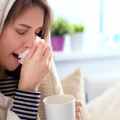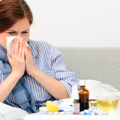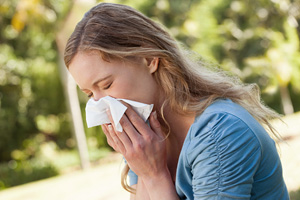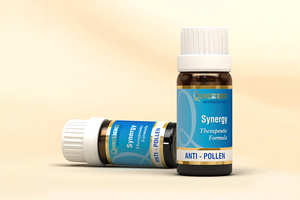Aromatherapy Support For Spring Allergies
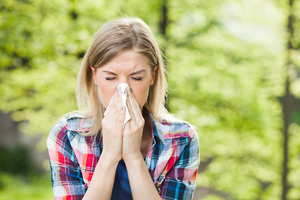 If you have been eagerly awaiting the arrival of spring, then spare a thought for the millions of people who were dreading the appearance of any green foliage or grass.
If you have been eagerly awaiting the arrival of spring, then spare a thought for the millions of people who were dreading the appearance of any green foliage or grass.
The number of people who suffer from hay fever or spring allergies in the UK has trebled over the last 30 years to around 16 million people, which represents 1 out of every 4 of the UK population.
The same phenomena is being seen around the world, with allergies of all types on the increase.
Here in the UK in late March, tree pollen can begin to occur and this will impact around 25% of those who suffer from allergies, and grass pollen begins to affect people in early May through until August. Experts in this subject believe we all have a fixed level of pollen toleration, which varies from person to person. So, while some suffer even from the merest whiff of pollen, others only reach for the tissues when levels are very high. However, once the allergy is triggered, it doesn’t take much to set it off again.
Why are allergies on the increase?
Some experts point the finger at fussy parents, whose insistence on cleanliness means their children are unable to fight bacteria. Others believe that their young immune systems are looking for things to do, and mistakes pollen for a foreign invader and acts violently against it. Bizarrely, pollen levels have actually been decreasing over the years as grassland and rural areas have fallen victim to development. Yet allergy sufferers are on the increase.
Then there is the genetic connection. Allergies also tend to run in families, and if one parent has an allergy then there is a 33% probability that their offspring may also inherit some form of allergic reaction. The allergy they suffer may not be the same one as their parents have, but research has shown that Spring allergies, asthma and eczema can all have a genetic connection.
The science bit
Also known as seasonal allergic rhinitis, hay fever is caused by pollen produced by trees, grass, or even weeds such as mugwort or nettles. The pollen from these plants causes the immune system to increase production of antibodies and release a natural substance called histamine that is present in all cells throughout the body. Histamine causes blood vessels to expand, and can cause severe irritation to the upper respiratory passages including the eyes, sinuses, nose, and throat. This results in these areas becoming inflamed and causes all manner of discomfort, presenting as the typical symptoms of hay fever and allergies;-
- Frequent sneezing and coughing
- Runny or itchy nose
- Nasal congestion
- Itchy and bloodshot eyes
- Sinus pain
- Headaches
Antihistamine medication is prescribed to help to relieve these symptoms by blocking the histamine receptors on cells, which reduces the physical reaction to allergens on the nasal and eye tissues. However, this medication has side effects including drowsiness that prevents the operation of machinery or driving, plus headaches, blurred vision, low blood pressure and a dry mouth.
Essential oils for hay fever and spring allergies
As you would expect, there are several essential oils to ease the symptoms of hay fever and spring allergies. The particular symptoms that you experience will determine which essential oil would be best for you. The essential oils below are some of the most suitable and effective ones for easing the symptoms of hay fever and spring allergies;-
- Chamomile Roman – an effective oil that soothes and eases inflammation, clears headaches, and calms the nervous system
- Cypress –helps to suppress coughing and eases breathing difficulties caused by mucus
- Eucalyptus – relieves congestion on the chest, clears sinuses, and eases head tension
- Hyssop – this oil relieves spasms in the respiratory system, loosens phlegm, and soothes itchy coughs. Avoid using this oil if you suffer from epilepsy
- Lavender – helps to suppresses allergic airway inflammation, soothes the respiratory tract, and takes the stress out of your suffering
- Lemon – a clearing and soothing oil that also eases inflammation and respiratory difficulties
- Melissa True – a soothing oil that calms breathing and brings respiratory relief
- Peppermint – clears stuffy sinuses, eases breathing difficulties, and helps to relieve headaches
How to use essential oils for hay fever and spring allergies
There are lots of really easy ways to use essential oils to ease the symptoms of hay fever and spring allergies. The very easiest way is also the most effective; just inhale 2 or 3 drops of essential oil placed on a piece of tissue! There is no faster way to get essential oils into your system because when you inhale the aromatic molecules they travel directly from the lungs into your bloodstream as your lungs do their job of oxygenating your blood. This method is ideal when you are outdoors and away from home.
When you are at home you can add your essential oils to an aromatherapy diffuser so that the air around you is diffused with the soothing aroma to help clear your sinuses, soothe streaming eyes, and ease your misery. This works especially well to aid a good nights sleep when you put your aromatherapy diffuser in your bedroom and run it overnight. Before retiring to bed add up to 8 drops of your essential oils to a nice warm relaxing bath, because this method always brings its own special type of comfort and relief. To get the greatest results with aromatherapy it’s always a case of finding what works the best for you, personally.
Massaging the sides of the nose, forehead, temples and the back of the neck with a blend of oils in a carrier also brings soothing comfort for many sufferers. A gentle massaging action around the nose really helps to soothe those streaming eyes and mucous membranes. Or you can add your oils to an aromatherapy cream or lotion base to provide a treatment along with your daily skin care routine. Add only 2 or 3 drops in total of essential oil to 10mls of your chosen carrier for a facial treatment. If you decide to use peppermint essential oil do not use more than 1 drop, since oil is very powerful and can irritate sensitive skin.
Copyright © Quinessence Aromatherapy Ltd 2023. Written by Geoff Lyth



